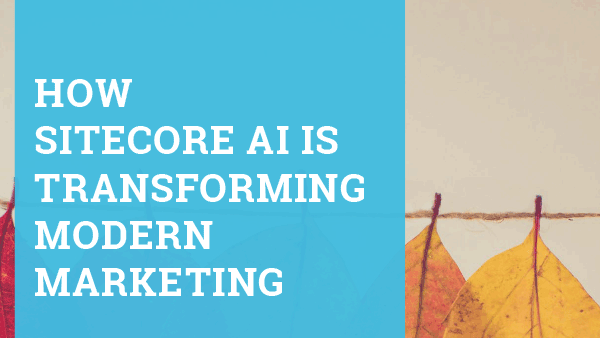

Apr 13, 2021
With the growth in omnichannel marketing initiatives and so many customers going back and forth between smartphones, tablets, consoles, computers, and even offline touchpoints, marketers have realized the importance of having a unified view of the customer that goes beyond marketing automation.
To centralize all that disparate behavioral data and turn it into cohesive insights, marketers need a platform capable of collecting, managing, and using customer data. That’s where a customer data platform (CDP) enters the stage.
According to Gartner :
A customer data platform is a marketing system that unifies a company’s customer data from marketing and other channels to enable customer modeling and optimize the timing and targeting of messages and offers.
Customer data platforms are also great at identifying segments or groups of consumers who share similar interests. The result is not only to target these specific individuals but to optimize your messaging for each group accordingly.
This article will talk about a customer data platform, how it works, its benefits, and how you can incorporate it into your martech stack.
How Does A Customer Data Platform Work?
CDPs are composed of four parts: data collection, profile unification, segmentation, and activation.
Data Collection
This refers to the CDP’s ability to integrate first-party data and customer behavioral data from multiple online and offline customer journeys and integrate it with second and third-party data. CDPs are capable of storing data and reading it in real-time. They can process:
- Customer identifiers including browser cookies, names, emails, and device IDs.
- Attributes such as demographic information and purchase history.
Profile Unification
CDPs have the ability to consolidate user profiles at the user level and connect different attributes to identities. This includes:
- Linking multiple devices to a single user once they’ve been identified,
- Consolidating duplicate customer records if users logged in using another address.
Segmentation
A CDP is an interface that enables a marketer to create and manage different segments of unified customer data. At a bare minimum, a customer data platform needs to include rule-based segment creation, but advanced CDPs include:
- Automated segment discovery,
- Predictive analytics and propensity models,
- Importing and deployment of custom models built on third-party analytics platforms
Activation
Marketers need execution tools to make sure everything works as planned and act on all the data and profiles they’ve created. Activation includes:
- Providing recommendations to customers or suggesting customer journey actions,
- Dynamic optimization that leverages data to display content using templates,
- A/B testing and multivariate tests to optimize the customer experience,
- Taking real-time decisions based on the customer data,
- Customer journey analytics with actionable insights.
Now that we’ve seen a customer data platform’s elements, let’s dive straight into the benefits.
What Are The Benefits of A CDP for Marketing Teams?
One of the major benefits of using a CDP is identifying patterns in your customers’ behavior which can be used to create predictive models for future marketing efforts.
Another benefit of using a CDP is that it can help you find insights on how to improve your product or service offerings by analyzing what customers like and dislike about them based on their interactions with customer representatives. But that’s not all. These are the main benefits of a CDP for marketing teams:
1. Remove Data Silos
Customer data is the cornerstone of marketing operations. CDPs can break data silos by giving you a solution that unifies all your customer data and makes it available to every department in your company. CDPs centralize data from multiple sources across departments, especially those coming from your CRM and CMS. With a customer data platform, marketers, salespeople, and customer support teams can access data to close deals and support customers faster.
2. Collect Data from Your Customers and Audience
Data is everywhere, and it’s the job of a savvy marketer to make the most of it. A CDP collects primarily first-party data from touchpoints and systems across your company including customers, site visitors, followers, and subscribers. First-party data is the best type of data a marketer can collect and use because it comes directly from your customers and audience, helping marketers stay confident that the insights they’re gathering come from accurate audience data. To expand user profiles, first-party data can also be integrated with second and third-party data.
3. Gain Insights About Your Customer Journey
Since customers are using multiple channels and devices, their expectations are increasing. A CDP helps marketing teams deliver a consistent omnichannel customer journey across devices. For example, suppose a customer or a segment doesn’t like how a product is advertised on a channel. In that case, a CDP can give marketers insights into their behavior to change content and deliver a personalized experience.
4. Easier Compliance with Privacy Regulations
It might seem counter-intuitive, but by unifying user data across all channels it becomes much easier to find and remove personal data to comply with privacy protection regulations like GDPR and CCPA.
Incorporating A Customer Data Platform Into Your Martech Stack
A CDP is the neural center of marketing. It gives you a unified customer view while, at the same time, collects intel from both unstructured and structured data sources. With those capabilities, your customer data platform needs to be at the front and center of your marketing efforts. Let’s talk about how to incorporate a CDP into your marketing stack.
A CDP solution has built-in API connectors that enable integrability with other martech applications such as CRMs, marketing automation platforms, CMSs, and email marketing platforms.
One of the main benefits of a CDP is that it isn’t that hard to build a connector or automatically pull data from SQL databases or external sources to process it and push it to other marketing applications. When used correctly, a CDP helps data handling and enhances personalization efforts.
Since a CDP can help marketers identify customers’ specific needs and interests, they get a richer view that fuels CRM systems by centralizing customer interaction data. Thus, a CDP solution facilitates smart informed customer interaction management and internal processes.
When incorporating a CDP into your martech stack, it’s important to choose one that suits you well. There is a wide variety of CDP solutions available, and a simple search in G2 reveals a myriad of potential choices.
Before you choose a CDP, ask yours the following questions:
- Does your CDP need to serve marketing, sales, and customer support?
- Do you have an IT team to help you integrate different data sources together?
- Do you have many disparate customer data sources?
- Do you use more than five martech vendors in your stack?
- Are you concerned about data compliance?
- Is this CDP scalable and integrable with the martech solutions you’re using?
- How does the CDP vendor roadmap look?
If you know you need a CDP solution but aren’t sure of how to answer these questions, chances are you need a CDP integration partner like Oshyn.
Oshyn: Your CDP Implementation Partner
Implementing a data management platform can jumpstart your marketing campaigns and give you an unprecedented number of insights. However, sometimes marketing and IT teams don’t work together to make CDP implementation a reality.
When that happens, a CDP implementation partner like Oshyn can help CMOs bridge the gaps between the marketing team and IT implementation.
As Sitecore implementation partners, we have the tools at our disposal to set you up from the ground up with a digital experience platform that also includes a customer data platform already within it. Sitecore recently acquired Boxever, a leading CDP platform, to augment their offering and redefine what’s possible for a DXP, making it easy to capture, unify, and act upon customer data to deliver personalized experiences at scale.
An implementation partner can help you navigate challenges, drive priorities, remove roadblocks, and bring the knowledge and experience marketing teams need to get a better ROI from their CDP implementation.
Oshyn can help you evaluate your needs and priorities, give you an experienced perspective, and even provide you with alternative solutions for your particular needs. We ask you the right questions to get the conversation started and guide you to the right solution.
If you want to learn more about how we can partner with you and what makes us the right implementation partner, read How to Choose a Sitecore Partner.








